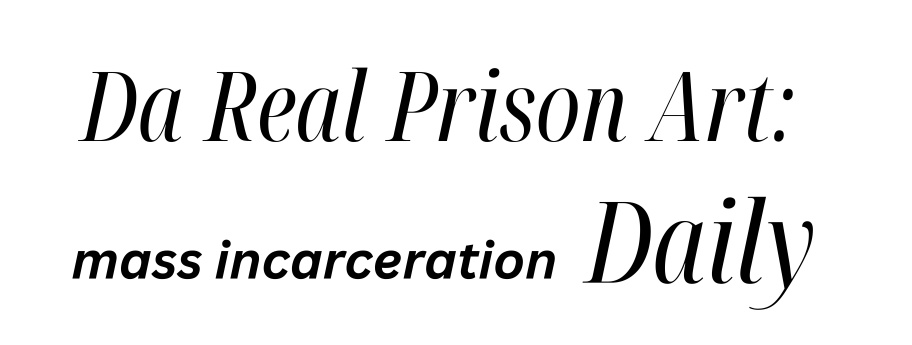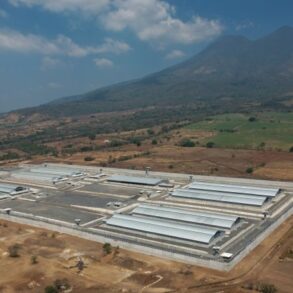Three quarters of prisons in England and Wales are rated poor or inadequate in one of four measured categories and more than a third are unsafe, according to analysis by the Observer of hundreds of inspections.
They are severely overcrowded, with 86,763 people locked up and just 947 cells unoccupied, even under conditions where many prisons are running well over capacity. Leeds prison, for example, is at 173 percent of its Certified Normal Accommodation, Durham at 169 percent, and Wandsworth at 163 percent. Three in five prisons were in this position in 2019, according to the Howard League for Penal Reform.
Over 14,000 are in prison on remand—that is, without having been found guilty—and nearly two-thirds of all those given custodial sentences last year had committed non-violent offences.
President of the Prison Governors Association Andrea Albutt told the Observer, “We are stuffed to the gunwales. We are doing little more than warehousing people… In a nutshell, it’s dangerous. This is absolutely the worst I’ve ever seen.”
Charlie Taylor, chief inspector of prisons, commented, “We cannot allow a situation to persist where prisoners are simply warehoused in deteriorating conditions, with the real risk of harm not only to them as individuals but also to the public if their rehabilitation has not been supported during their time in custody.”
Taylor was so concerned about Bristol prison that he sent a letter to the Secretary of State this July warning of its “apparently chronic and intractable problems.”
After a decade of rock-bottom standards score in inspection, the most recent carried out that month found eight suicides in the previous year (and one immediately following the inspection), emergency cell bells left unanswered, half the prisoners kept in two-person cells built for one person, most prisoners locked up for 22 hours a day, and inadequate provision of physical and mental health care, education, purposeful work or rehabilitation plans. A quarter of prisoners reaching the end of their sentence were released into homelessness.
This is just a snapshot of problems rife throughout the prison system.
Rates of self-harm are atrocious. In the year to March 2023, close to 60,000 incidents were recorded—more than one every ten minutes. This was an 11 percent increase on the year before. Self-harm in women’s prisons increased by a staggering 51 percent to its highest level on record.
In the same period, there were more than 22,000 cases of assault (up by 11 percent) and 2,500 of serious assault (up 23 percent), the large majority prisoner-on-prisoner.
More than three inmates killed themselves every fortnight—88 in the year to June 2023, a 26 percent annual increase. Prisoners on remand account for a disproportionate number of suicide victims.
Data obtained via Freedom of Information requests in 2021 found that force was used against prisoners by staff 59.1 times per 100 inmates in the year to April 2020. A year earlier, inspectors from the European Committee for the Prevention of Torture found “deeply concerning” use of unjustified violence against prisoners by staff in a prison system described as being in “deep crisis,” both “violent and overcrowded”.
The number of people kept in these hellish conditions has nearly doubled in the last three decades thanks to law-and-order policies pursued jointly by the Conservatives and the Labour Party—whether in government or opposition.
Then Tory Home Secretary Michael Howard’s 1993 “prison works” campaign marked a reverse in falling prison numbers. Labour Home Secretary David Blunkett’s 2003 Criminal Justice Act ratcheted sentences and toughened guidelines to the point that even then Director of Public Prosecutions Ken MacDonald described the legislation as “grotesque” and likely to have “an extraordinary effect on the prison population.” In 2017, the Prison Reform Trust estimated an additional 16,000 people were in prison as a result.
This is set to expand. The House of Commons Public Accounts Committee notes “an expected increase in demand [for prison cells] as government implements its plans for 20,000 new police officers and sentencing reforms start taking effect.” Nearly 100,000 people are expected to be imprisoned by 2026.
Labour’s only criticism has been that “our prisons are turning criminals away because the Conservatives failed to build the cells they promised,” in the words of Shadow Justice Secretary Steve Reed. He continued in an interview last week, “Labour is the party of law and order. In government it will get on and deliver the prison places we need to ensure that dangerous criminals are where they belong—behind bars.”
Liberal commentators bewail the situation, seeking to convince Labour and the Tories of the inhuman and ineffective impact of this regime. Both points are undoubtedly true. Pitifully few resources are directed to the rehabilitation—or to maintaining an environment in which that work is remotely possible—as reflected in the high rates of reoffending.
But the prison governors and inspectors are closer to the mark than the Guardian columnists: this is a deliberate policy of “warehousing” a section of the population, not a misguided strategy for “justice”.
Those imprisoned are generally people who have suffered some of the worst experiences of poverty, degradation and social dislocation inflicted by capitalism. Rather than attend to these problems, capitalist governments deal with the anti-social and sometime dangerous behaviour produced by shunting a whole section of the population behind bars—frequently condemning them to a cycle of imprisonment and unemployment or highly precarious work, mental health and drug issues.
The threat of this fate then helps to terrorise the most heavily policed poor, working-class neighbourhoods.
By far the worst example in the world is the United States, where 1.2 million people are imprisoned in brutal conditions as part of a de facto war on the poor—the highest rate of incarceration anywhere on the planet. The UK is some way behind (thought it has the highest incarceration rate in Western Europe), but the issues are the same. A study by Cardiff University’s Wales Governance centre found that the imprisonment rate for the ten most deprived local authorities in England in 2021 was ten times higher than for the ten least deprived.
Previous studies have shown two-thirds of inmates are unemployed before and after custody and seven percent were homeless or in temporary accommodation before imprisonment and 14 percent afterwards. Nearly half have no prior qualifications and more than half are functionally illiterate. A quarter have been in local authority care at some point in their childhood and more than a quarter have experienced abuse at home. Rates of mental illness are significantly higher than in the general population.
Prison does nothing to address these problems, with less than a third of inmates saying it is easy to see a mental health worker and 36 out of 37 prisons inspected in the last year providing a good or reasonably good standard of purposeful activity. Provision of education is inadequate in 60 percent of prisons and requires improvement in the other 40 percent.
The sources of anti-social crime are known and overwhelmingly treatable—or at least humanely manageable. The brutality of the penal system is not a necessity, but one of the most naked examples of the social carnage wrought by capitalist inequality and impoverishment, and the ruling class’s authoritarian response to its consequences.
This post was originally published on this site be sure to check out more of their content.






